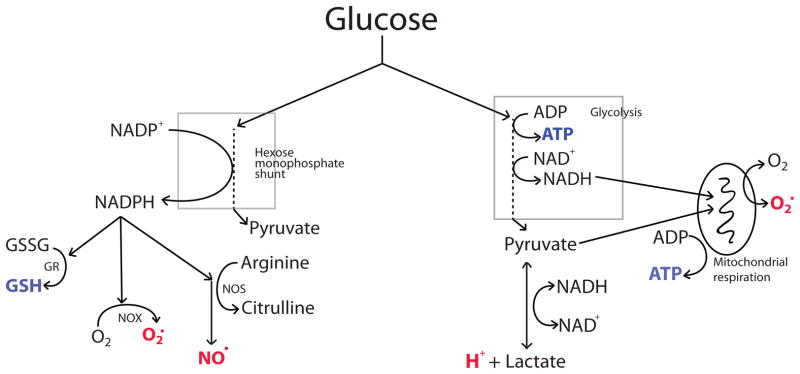Figure 1.

Metabolic fates of glucose relevant to ischemic injury.
Products thought to have favorable effects on stroke outcome are shown in blue font, and products thought to have deleterious effects are in red font. Glucose metabolized by the hexose monophosphate provides reducing equivalents for producing NADPH. NADPH in turn can be used by glutathione reductase (GR) to regenerate glutathione (GSH) from glutathione disulfide (GSSG), and for the production of nitric oxide (NO·) by nitric oxide synthase or superoxide (O2·) by NADPH oxidase (NOX). ATP is produced by glycolytic production of glucose to pyruvate and NADH. Pyruvate and NADH are normally oxidized to CO2 and NAD+ by mitochondrial respiration to generate additional ATP. Under ischemic conditions, oxidative metabolism cannot occur and NAD+ is instead regenerated by the formation of lactic acid. During reperfusion, damaged mitochondria may produce superoxide by donating glucose-derived reducing equivalents to molecular oxygen.
